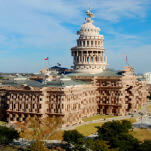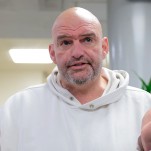
Image: Angelica Alzona
On the third Friday of each month, college professor Jerry and scientist B.J. attended the monthly potluck of the residents of their neighborhood in Maplewood, New Jersey. Jean-Marie and her partner June could be found out and proud at a Giant Food supermarket in Sterling, Virginia. David was cutting a tree outside of the house he shared with his partner in Needham, Massachusetts when a neighbor asked him, “Ah, a lumberjack?” David replied, “Yes, we’re bucking the stereotype.”
These are just a handful of examples of couples described in the last 40 plus years of trend pieces regarding gays and lesbians in America’s suburbs. One could trace the history of, if not the country’s cultural understanding of the phenomenon, then certainly its preoccupation with it via New York Times headlines alone. 1977: “Homosexuality And the Suburbs.” 1986: “Suburbs Are a Magnet to Many Homosexuals.” 1991: “A Milestone in the Fight for Gay Rights: A Quiet Suburban Life.” 1996: “Gay Parents Ease Into Suburbia; For the First Generation, Car Pools and Soccer Games.” 2000: “A Quiet Town Of Potlucks, Church Socials And Two Dads; Gays Find Warm Welcome In a New Jersey Suburb.” 2004: “Welcome to the Rainbow State.”
Historically, the story has gone like this nut graf from “Welcome to the Gayborhood,” which appeared in the June 20, 2006, issue of The Advocate:
As growing numbers of gay and lesbian Americans seek affordable roomy houses with a yard, along with safe streets and a good school for their children, they are changing the American suburbs. They’re shopping together at big-box stores and dining at local chain restaurants. They’re sitting on the boards of the neighborhood associations and public schools, and they’re going to parties at their straight neighbors’ homes.
It’s a narrative as cliched as the notion that gay men love The Wizard of Oz: To escape small-town persecution, gays flee to urban centers only to realize after a few years that if they ever go looking for their heart’s desire again, they shouldn’t look any further than their own backyard. If it isn’t there, they never really lost it to begin with. Back to the suburbs they go.
“I think in general the media coverage of LGBT geography often has come down to, ‘Where are people moving? Where do they want to live?’” Gary Gates told Jezebel. For years, Gates was the media’s trusted source on the matter. As an author and demographer, he helped shape people’s understanding of the size of the gay population of the U.S. and where its members lived. Via his research with the Williams Institute and general expertise, Gates helped perpetuate this idea that gay people were moving to the suburbs en masse.
But now he believes that he oversold the mobility narrative. Gates said he became more skeptical when he realized Gallup poll results that indicated social acceptance in areas that correlated to relatively high LGBTQ population percentages. Because we have no way of determining on a mass scale when people came out, the numbers he once interpreted as proof that gays and lesbians were moving to the suburbs could just as easily show that gay and lesbians in the suburbs were more likely to identify as such from where they already were, in the wake of growing social acceptance.
“The vast majority of people don’t actually have the luxury to pick wherever they want to live,” Gates explained. “And there’s absolutely no evidence that LGBTQ people are more likely not to live in the area where they grew up than non-LGBTQ people. I suspect the ones who move make different decisions, absolutely. But LGBTQ people aren’t necessarily inherently more mobile. To be mobile you have to have more money, you’re probably more educated, you’re probably more white.”
At the very least, our collective understanding of the magnetic and then repelling effect of “metronormativity” (Jack Halberstam’s term for the mistaken notion that all queer people live in urban areas), has been overly simplified, despite the rigor of the thought that has gone into it by several experts, many of whom spoke to Jezebel. The narrative of LGBTQ mobility has been hampered by insufficient data collection, a strong bias toward gay men as representative of the whole of the queer population, and an attempt to dissuade researchers from their interests in these groups. Where and in what numbers LGBTQ people live is a story that exists largely in imagination and inference. Oral tradition is, in many ways, more reliable than the scant data that has been quantified. The incomplete picture underlines the ephemeral nature of queer history. There are parts of it that are just gone like flaking embers in the wind. It’s not only queer history that is largely undocumented and unwritten—it’s the present as well.
-

-

-

-

-

-

-

-

-

-

-

-

-

-

-

-

-

-

-

-

-

-

-

-

-

-

-

-

-

-

-

-

-

-

-

-

-

-

-

-








































